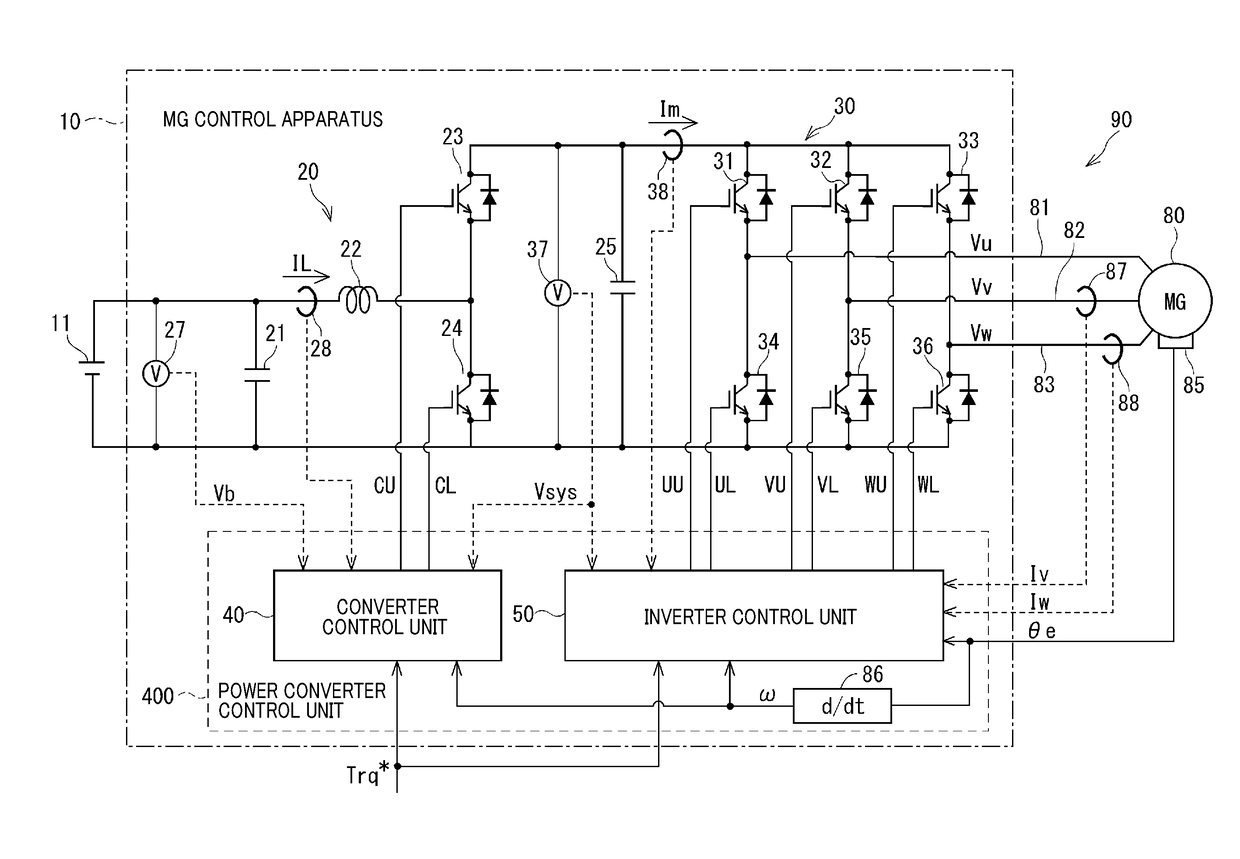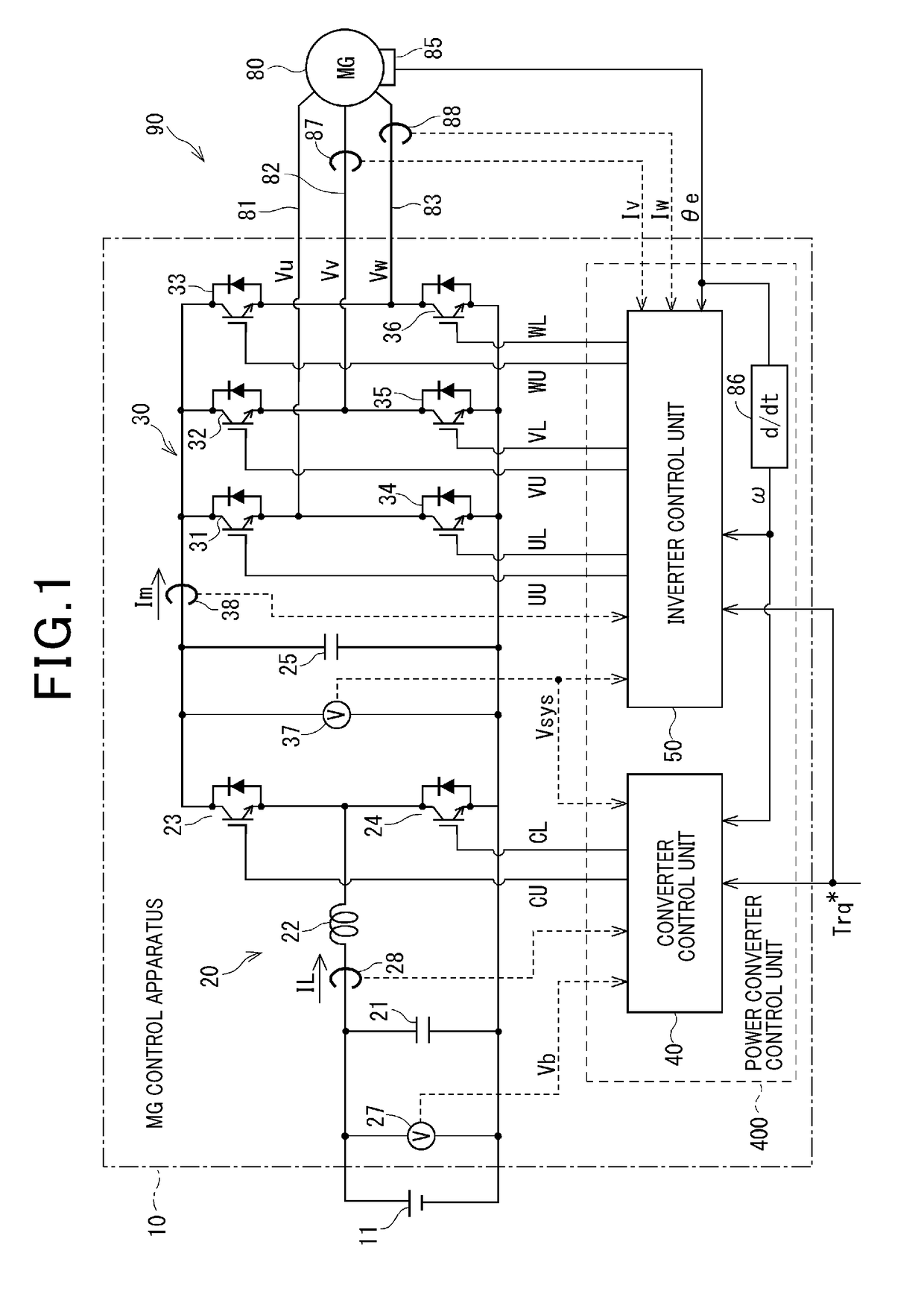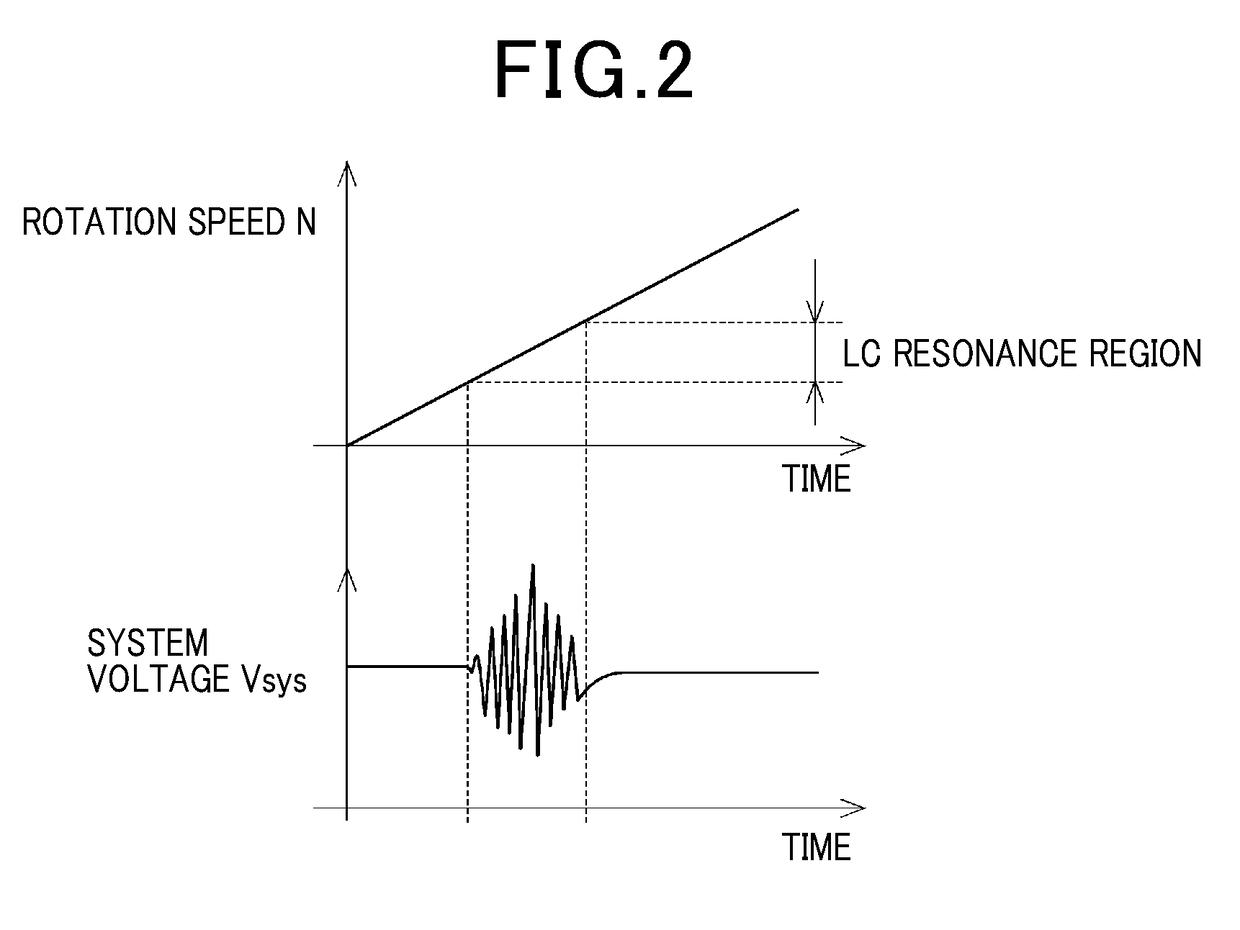Control apparatus for ac motor
a control apparatus and motor technology, applied in the direction of electric generator control, dynamo-electric converter control, dynamo-electric gear control, etc., can solve the problems of voltage fluctuation and increase system losses, and achieve the effect of effectively suppressing the fluctuation of output voltage and increasing system losses
- Summary
- Abstract
- Description
- Claims
- Application Information
AI Technical Summary
Benefits of technology
Problems solved by technology
Method used
Image
Examples
first embodiment
[0105]With the first embodiment, which is a basic example, the boost / non-boost state judgement unit 42 acquires the power source voltage Vb and the voltage command reference value Vsys*. In addition, the detected value of the system voltage Vsys and information on the voltage waveform and the modulation factor m, specified by the modulator 60 of the inverter control unit 50, are acquired, in accordance with the boost / non-boost state judgement configuration.
[0106]The boost / non-boost state judgement unit 42 judges whether the state of the converter 20 required in the next control cycle is to be the boost state or the non-boost state, based on these items of information. Details of the boost / non-boost state judgement configuration are described hereinafter.
[0107]With the present embodiment, as can be understood by referring to FIG. 8, the “boost state” of the converter 20 signifies “a state in which the the high-potential side switching element 23 is continuously switched alternately t...
second embodiment
[0132]With the second embodiment, the system voltage Vsys is used as information acquired by the boost / non-boost state judgement unit 42, as indicated by a single-dot chain line in FIG. 6.
[0133]With the second embodiment as shown in FIG. 9A, a threshold value Vsys_th is set for the system voltage Vsys. The boost state / non-boost state judgement unit 42 acquires the detected value of the system voltage Vsys, detected by the voltage sensor 37. In FIG. 9A prior to time tx, in the boost state, the system voltage Vsys is higher than the threshold value Vsys_th. Subsequently when the system voltage Vsys falls below the threshold value Vsys_th at time tx, the boost / non-boost state judgement unit 42 determines that a request for transition from the boost state to the non-boost state has occurred, and notifies this to the voltage command value alteration unit 43.
[0134]If the spectrum amplitude of the bus current at the specific frequency is equal to or higher than the judgement threshold valu...
third embodiment
[0135]With the third embodiment as shown in FIG. 9B, a threshold value Vsys*_th is set for the voltage command reference value Vsys*.
[0136]The boost state / non-boost state judgement unit 42 acquires the voltage command reference value Vsys* calculated by the voltage command reference value calculation unit 41. In FIG. 9B, prior to time tx, in the boost state, the voltage command reference value Vsys* is higher than the threshold value Vsys*_th. Subsequently when the voltage command reference value Vsys* falls below the threshold value Vsys*_th, at time tx, the boost / non-boost state judgement unit 42 judges that there is a request for transition from the boost state to the non-boost state, and notifies this to the voltage command value alteration unit 43.
[0137]If the spectrum amplitude of the bus current at the specific frequency is equal to or greater than the judgement threshold value at this time, the voltage command value alteration unit 43 changes the voltage command reference va...
PUM
 Login to View More
Login to View More Abstract
Description
Claims
Application Information
 Login to View More
Login to View More - R&D
- Intellectual Property
- Life Sciences
- Materials
- Tech Scout
- Unparalleled Data Quality
- Higher Quality Content
- 60% Fewer Hallucinations
Browse by: Latest US Patents, China's latest patents, Technical Efficacy Thesaurus, Application Domain, Technology Topic, Popular Technical Reports.
© 2025 PatSnap. All rights reserved.Legal|Privacy policy|Modern Slavery Act Transparency Statement|Sitemap|About US| Contact US: help@patsnap.com



